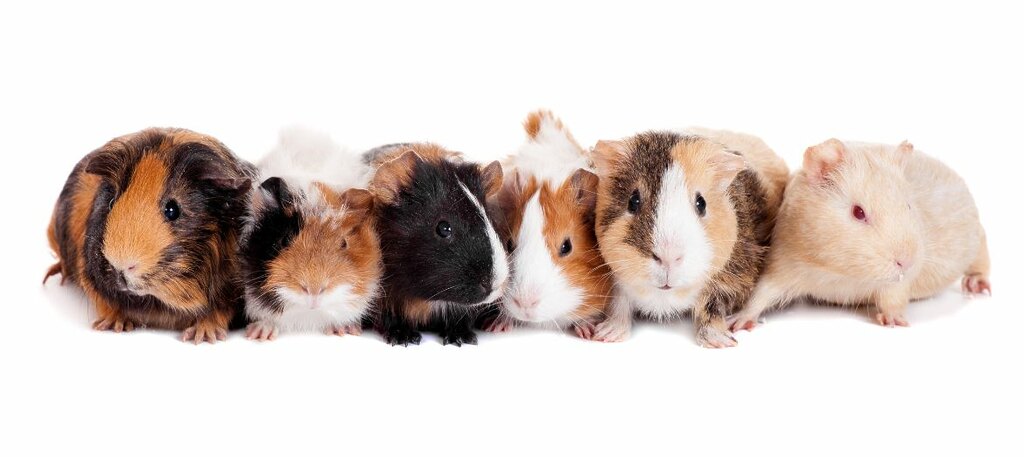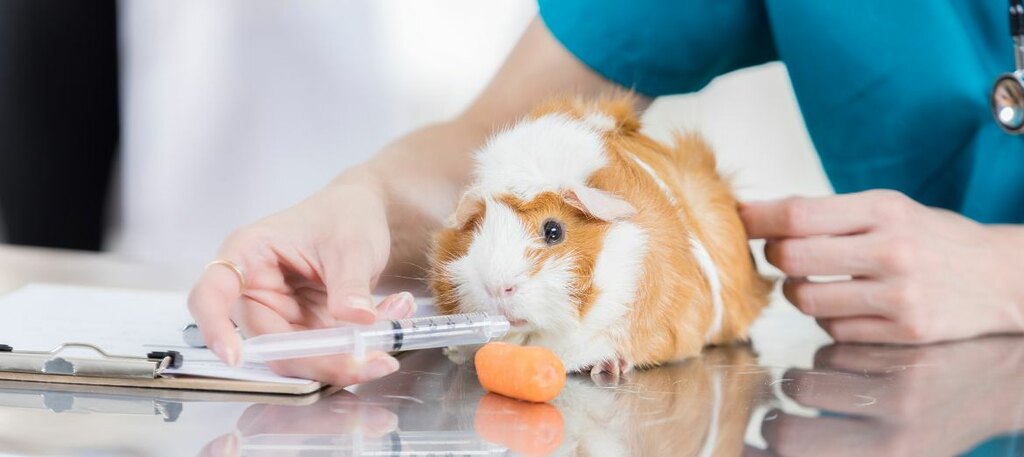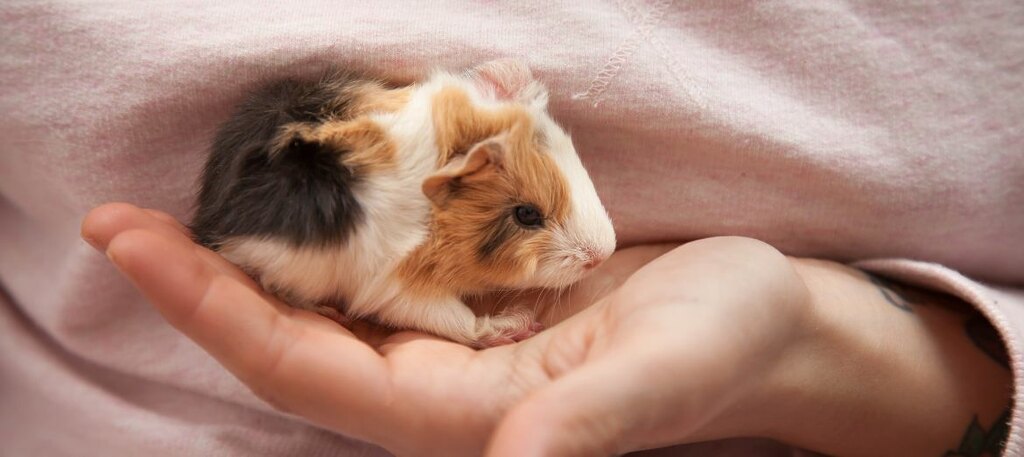Truth About Satin Syndrome Guinea Pigs

The Truth About Satin Syndrome in Guinea Pigs: Beauty and Health Concerns
Have you ever encountered a guinea pig with a strikingly shiny coat? If so, chances are, you’ve come across a Satin guinea pig. These unique little creatures are known for their glossy, almost glass-like fur that immediately catches the eye. But there’s more to Satin guinea pigs than meets the eye, and it’s important for owners to understand both their beauty and the potential health risks associated with them.
What Makes Satin Guinea Pigs Shine?
Satin guinea pigs possess a special genetic trait that gives their fur a distinctive sheen. This shiny, translucent appearance is caused by hollow hair shafts, which reflect light in a way that makes their coat look almost metallic, especially when seen in natural sunlight. This coat type can occur across different breeds and colours, making them particularly admired in the guinea pig community.
However, while their coats may be admired for their beauty, Satin guinea pigs are susceptible to a range of serious health problems, often grouped under what is known as Satin Syndrome.

Understanding Satin Syndrom
Satin Syndrome is a genetic condition that affects guinea pigs with the satin gene mutation. While it can affect guinea pigs that display the shiny coat, it can also impact guinea pigs that carry the gene without showing the physical trait. The syndrome primarily affects their bones and internal health, putting these small animals at risk of several serious conditions, including:
- Kidney disease
- Heart issues
- Weak bones
- Parathyroid problems
- Osteodystrophy
Osteodystrophy, in particular, is a common and debilitating condition among Satin guinea pigs. This metabolic disease prevents calcium from being absorbed properly, leading to the decalcification of bones, which in turn causes poor dental and bone health.

Symptoms of Satin Syndrome
Satin guinea pigs can suffer from a variety of symptoms that affect their overall quality of life. Owners should be vigilant for early signs of Satin Syndrome, which can develop as early as a few months to a year old. Some of the most common symptoms include:
- Weight loss
- Lethargy (reluctance to move around)
- Changes in gait or walking (hopping instead of walking)
- Difficulty standing or lying down
- Abnormal eating patterns (preference for soft foods)
- Sunken eyes
- Increased drinking and urination
- Dental and jaw problems
- Bone deformities
These symptoms, while often associated with Satin Syndrome, can also indicate other health concerns. Therefore, it is crucial to consult with a cavy-friendly vet if any of these signs are observed.

Diagnosis and Treatment
Guinea pigs are known for hiding their pain, so it’s often difficult for owners to recognise Satin Syndrome until the symptoms have progressed. Diagnosing the condition usually involves several tests, including:
- Blood tests
- Urine analysis
- Abdominal ultrasounds
- Dental exams
- X-rays
- In some cases, DNA sampling
Unfortunately, there is no cure for Satin Syndrome. Treatment focuses on managing the symptoms and keeping the guinea pig as comfortable as possible. Regular vet visits are essential for monitoring their condition, and pain management is often required as the syndrome progresses.
Signs of pain in guinea pigs include:
- Teeth grinding
- Sitting in a hunched position
- Squeaking when touched or moved
- Rapid, shallow breathing
- Reduced appetite and movement

How to Care for a Satin Guinea Pig
If you own a Satin guinea pig or are considering adopting one, it’s essential to be prepared for the additional care they may require. While Satin Syndrome can’t be cured, there are steps you can take to help maintain your guinea pig’s health and prevent some of the symptoms from worsening:
- Provide a quality diet: Ensure your Satin guinea pig gets the proper nutrition, with calcium supplements as recommended by your vet to support bone health.
- Sunlight: Natural sunlight in moderation helps in the synthesis of Vitamin D, aiding in calcium absorption. However, always monitor your guinea pig during sun exposure to avoid overheating or heat stroke. visit keep them cool in summer
- Regular check-ups: Frequent vet visits will help monitor the progression of Satin Syndrome and address any health concerns before they become severe.
- Avoid breeding: Since Satin Syndrome is a genetic condition, it is highly discouraged to breed Satin guinea pigs knowingly to avoid passing on the gene mutation to their offspring.

The Ethics of Breeding Satin Guinea Pigs
When it comes to the breeding of Satin guinea pigs, the ethics surrounding this practice are often questioned. The satin gene, which gives these guinea pigs their distinctive glossy coats, comes with a range of serious health risks, often leading to a condition known as Satin Syndrome. For this reason, many guinea pig enthusiasts, breeders, and associations strongly discourage the intentional breeding of Satin guinea pigs.
Since the satin trait is genetic, it is passed down to offspring, perpetuating the potential for health issues such as kidney disease, heart problems, and osteodystrophy. These conditions can significantly shorten a guinea pig’s lifespan and reduce their quality of life, requiring ongoing medical attention and specialised care.
In light of these concerns, many guinea pig associations refuse to recognise Satin guinea pigs as a distinct breed. This is done with the hope of discouraging people from breeding them and to promote the welfare of the animals over aesthetic appeal.
As captivating and unique as Satin guinea pigs may look, their health and well-being should always come first. It is crucial for breeders and pet owners to prioritise ethical practices by avoiding the breeding of guinea pigs with known health risks, ensuring that future generations can lead healthier and happier lives.
Conclusion
Satin guinea pigs are undeniably beautiful creatures with their striking, shiny coats. However, their genetic makeup can lead to serious health issues that require dedicated care and attention. If you’re thinking of adopting a Satin guinea pig or currently own one, it’s essential to be aware of the risks associated with Satin Syndrome. With the proper care, regular vet visits, and a good diet, you can help manage their condition and ensure they live as comfortably as possible.
